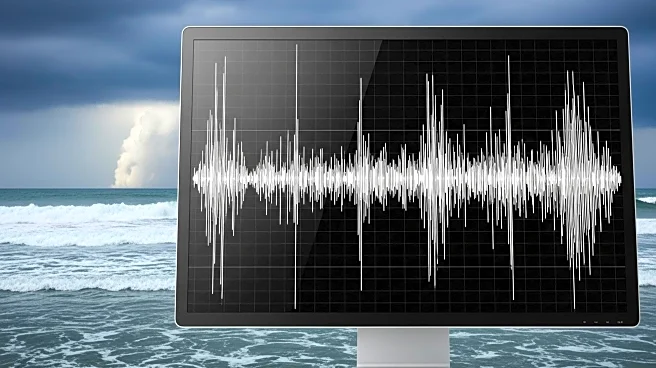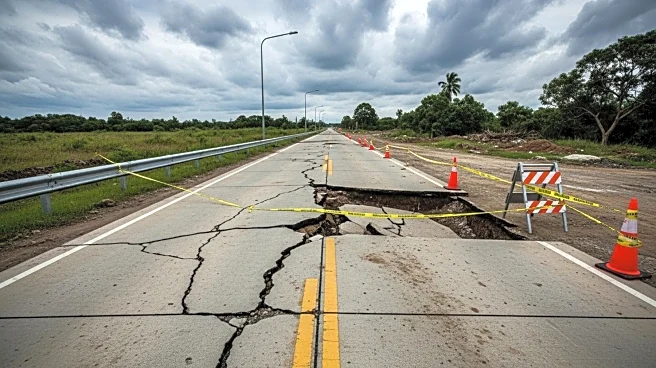What's Happening?
A powerful 7.4-magnitude earthquake struck off the southern Philippines, killing at least two people and causing significant damage to infrastructure, including hospitals and schools. The earthquake led to power outages and prompted evacuations due to a tsunami warning, which was later lifted. The Philippine Institute of Volcanology and Seismology expects further damage and aftershocks.
Why It's Important?
The earthquake underscores the Philippines' susceptibility to natural disasters, impacting public safety and infrastructure stability. The event highlights the need for effective disaster management and preparedness to minimize casualties and damage. The economic impact may be substantial, affecting local communities and requiring extensive recovery efforts.
What's Next?
Authorities are conducting damage assessments and preparing rescue and relief operations. The potential for aftershocks and further structural damage remains a concern, necessitating ongoing monitoring and support for affected communities. The government and volunteer groups are likely to play a crucial role in providing aid and ensuring safety in the aftermath of the earthquake.
Beyond the Headlines
The Philippines' location on the Pacific 'Ring of Fire' makes it prone to frequent seismic activity, necessitating robust disaster response strategies. The cultural and social resilience of the affected communities will be tested as they navigate recovery efforts. Long-term implications may include increased focus on infrastructure resilience and disaster preparedness.











